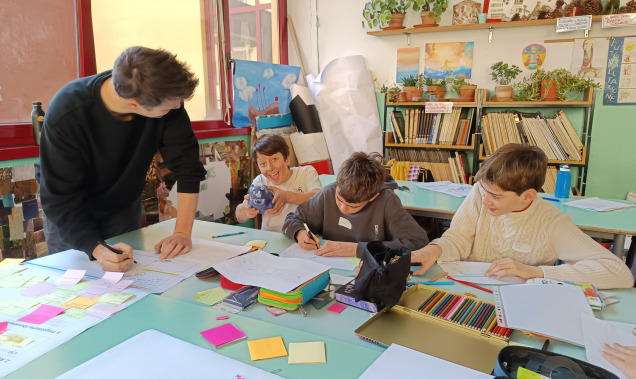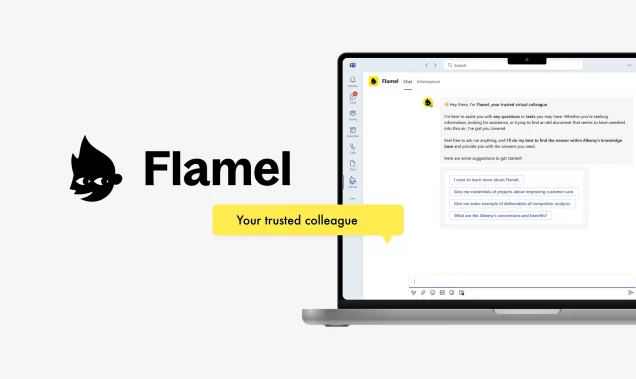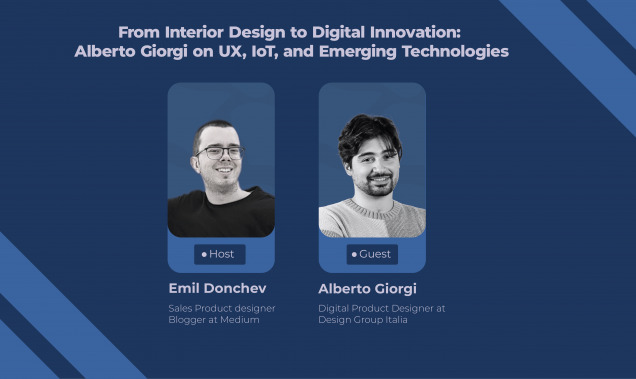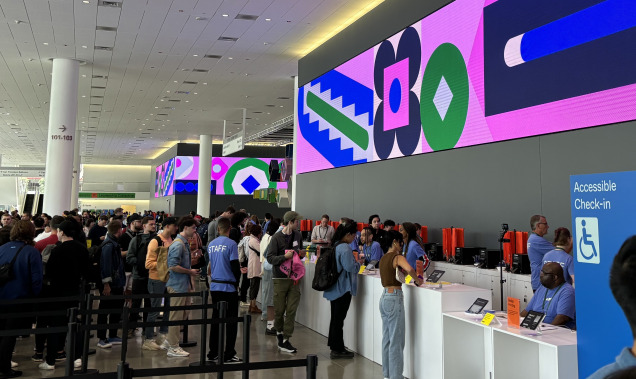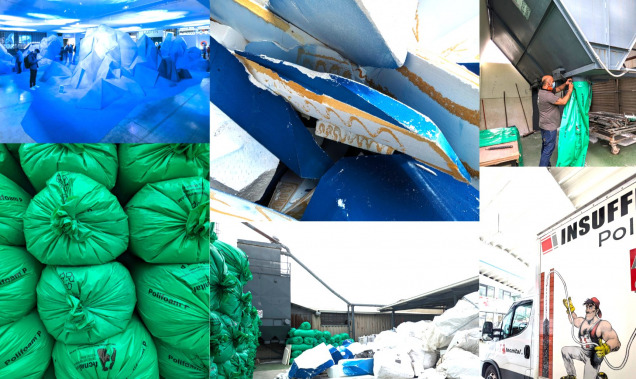Service Designers as mindful change agents
As companies are facing unexpected and drastic changes, the need for mindful change agents becomes crucial for success, writes Service Design Director Sara Bellini.
As the new normality settles in, we are adjusting to the novel ways of running businesses and getting things done on a day-to-day basis (read our previous thinking on design and the impacts of coronavirus here). We should not, however, forget how the recent pandemic has forced us to confront instability, complexity, and change. Now, more than ever, we should reflect on what to keep that has made us better at adjusting and reacting. Now is when mindful change agents are crucial for success.
Companies are facing an unprecedented set of human challenges
At present, organizations find themselves in extremely complex times where they are having to manage concurrently three forces that are pushing them to question the way in which they have worked up to now:
- External factors: closure impositions or slowdowns from governments, supply chain interruptions, consumer behaviors rapidly shifting, markets imploding…
- Internal factors: employees in remote work or shifts, social distancing at the workplace, remote work with clients, difficulties in business development, greater amounts of sick leave…
- Individual factors: employees having to manage new work-life balance pressures and thus asking for flexible hours or part-times, burn-out and increased stress levels, layoffs…
To make matters even more complex, the time frame in which adjustments must be made is unclear and what new normality will look like is yet to be defined in terms of wider spread rules and regulations. How organizations respond to these circumstances depends on the structure and mindset of the organization.
Below is a simplification of how an organization’s structure and planning of change initiatives are correlated, thus determining their impact.

Why Service Design?
A comprehensive view of how the elements of a business work together
As a discipline, service design has the objective of orchestrating all the elements, delivering an experience to customers in a cohesive manner to create a distinct brand experience and maximize the business potential. Therefore, it must touch upon people (customers and employees), touchpoints (both physical and digital), underlying infrastructure (soft and hard), and communication.
For these reasons, service designers are in a great position where they can be the actuators of change, the cultural moderators, and facilitators. They come from the outside, so they are free of the organizations’ constraints and habits, but in a favored position within multiple internal organizations’ teams with numerous viewpoints – top to bottom.
Mindful change agents are those individuals who extend and make accessible the practice of mindfulness and emotional intelligence to groups of people, communities, or organizations, helping these to work together towards a more engaging, connected, and compassionate workplace. Since service design is both vertical and horizontal, it can be a great humus to instill and help propagate new mindsets to enable widespread change inside and outside organizations.
Service design and design thinking to create change
There are different kinds of service designers: those who are more hands-on and able to craft physical and digital prototypes, whilst others that are more empathetic and drive the voice of customers. Some that are great storytellers and drive strategies and teams, others that plan meticulous, complex activities cross teams and resources. The togetherness of these different skills allows the practice to bare multiple fruits both at a tactical and strategic level, which also makes it difficult to master and pinpoint.
At DGI, we strive to adopt a design thinking approach in order to drive the right level of service design and thus to deliver the correct level of change impact. The steps to this process are well-renowned, yet activated and articulated specifically for each project.
The graph below showcases how service design combines abductive and deductive logic, enriching traditional methods and tools, in order to derive meaningful insights and craft valuable customer experiences.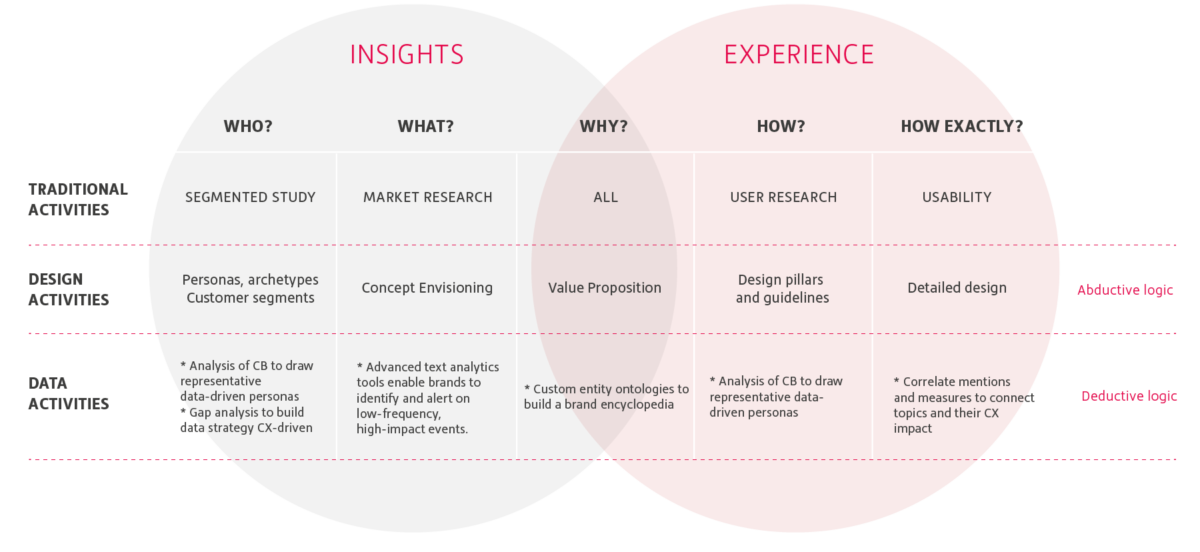
Change has always been the fuel for innovation. Change is frightening but also inviting because it opens the doors to a greater awareness of ourselves and of our context. Utilizing the discipline of service design, with a design thinking approach in a responsible manner in a business can guide and drive individuals to build emotionally intelligence teams and leaders so they can learn to navigate whatever the market, customers, and trends throw their way.
These are the core key ingredients that need to be added to service design and design thinking for meaningful and engaging change to be actuated:
Compassion
Businesses need to act responsibly towards the customers they are serving with their aspirations and difficulties; towards the leaders and top management for their ailments and tensions; towards teams, pushing the boundaries of how things have always been done, amidst doubts and frustrations; and, what often gets unacknowledged, towards the consultants as actuators and nurtures of something better for all.
Resilience
Organizations need to learn to patiently juggle between the known (comfort) and unknown (discomfort) creating safe spaces in which to explore and learn and make mistakes; they need to instill processes and mindsets that support the individuals working for them in navigating the over 150 biases that mold and sometimes distort the way we think and perceive so as to facilitate evolution towards a better self/organization.
Empathy
The workplace needs to thought of as a place where all actors are listened to in the same attentive manner; where each actor’s needs are weighed with the same rigor; where more than the processes the focus is on the outputs and solutions to initiatives and projects, in favor of knowledge actuation and self-empowerment.
These foundational skill sets position service designers in business as useful agents to understand complex contexts and identify how to build (internally to an organization for external impact) a process as well as solutions to gather tangible cross-business results, whilst empowering the actors involved in a life-long discovery of managing uncertainty.
